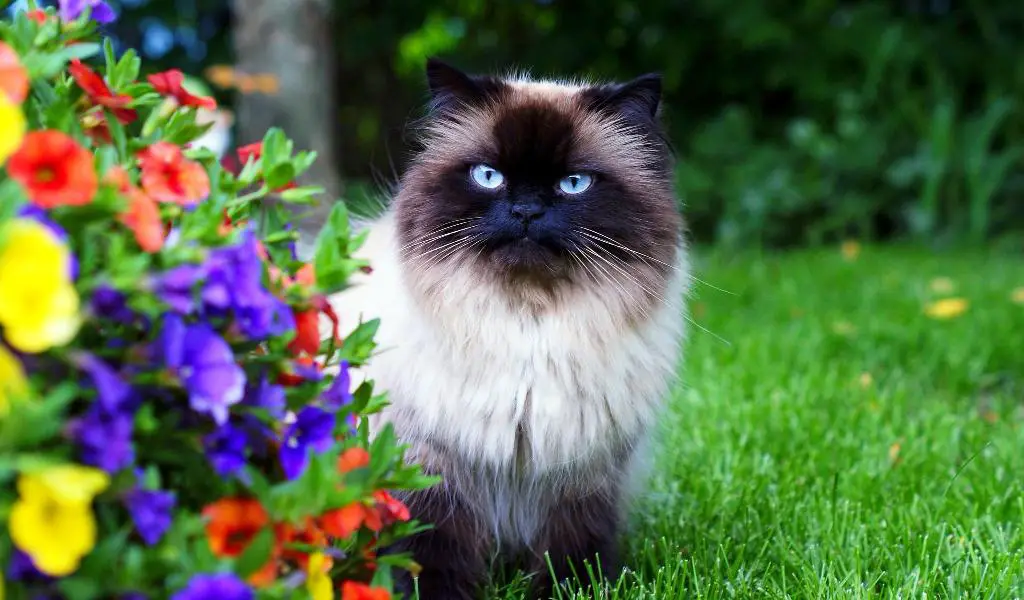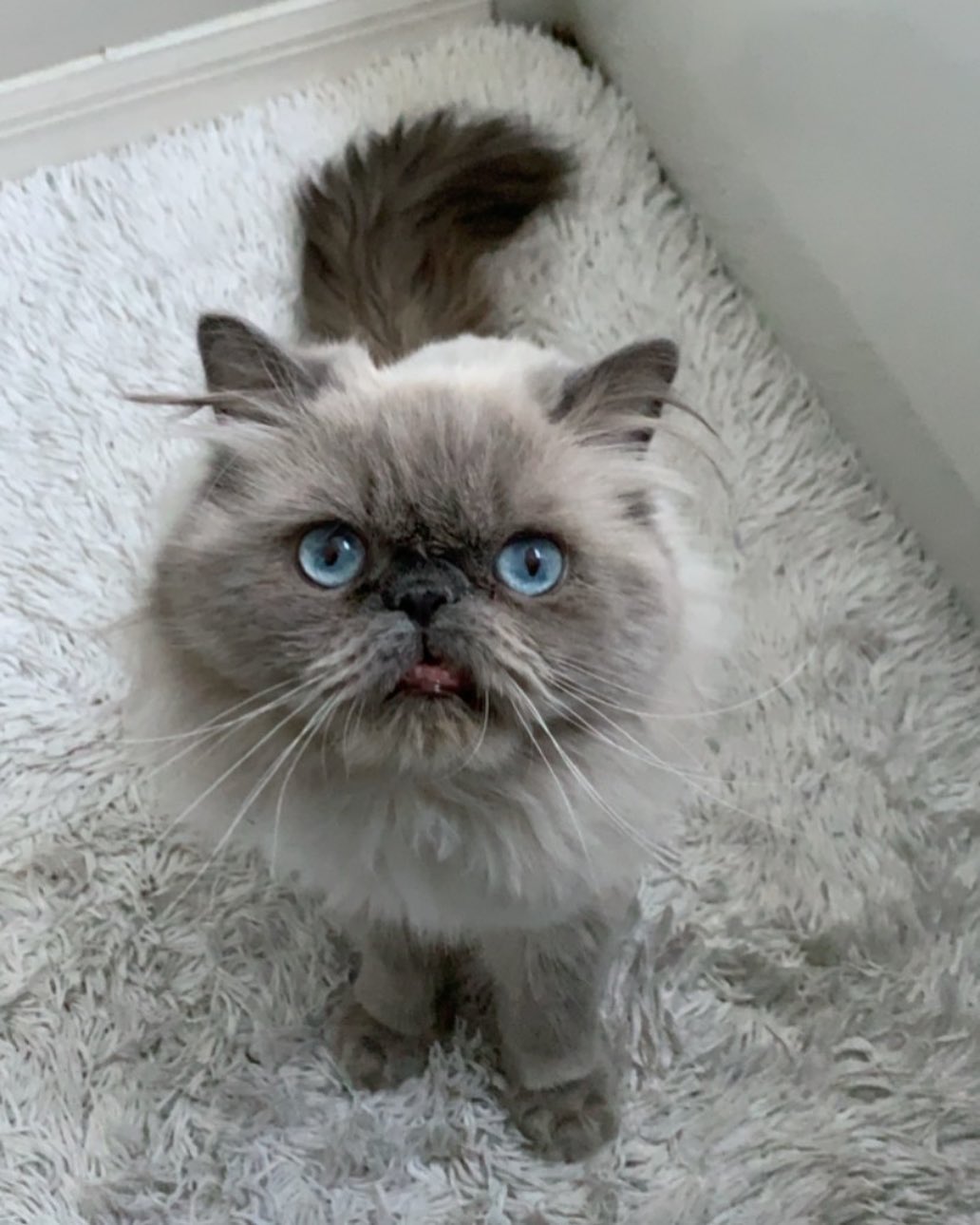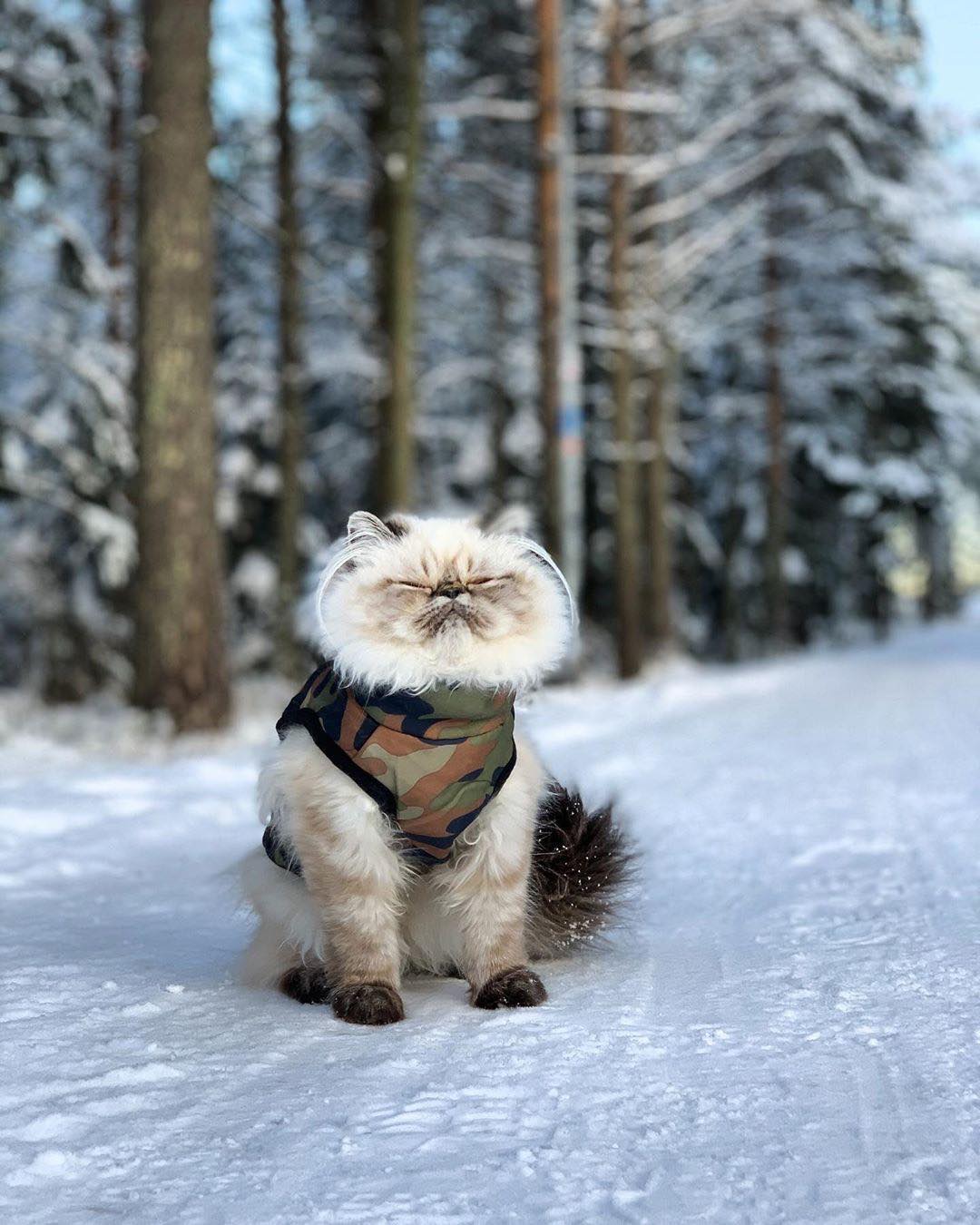The Himalayan cat is a blue-eyed long-haired creation of a color-point color, obtained by mating Persians with representatives of the Siamese group. Some of the teleological systems register representatives of this family as an independent breed, others as a variety of Persian cats.
#1 The Himalayan cat is a fluffy blue-eyed “ball” consisting of sheer cosmic charm and universal good nature.

Trouble-free in terms of behavior, moderately phlegmatic, but at the same time playful, the Himalayas are the type of pets that you can get along with from the first minutes of acquaintance. Do not expect from the Perso-Siamese dizzying acrobatic stunts and zeal for learning. But they will willingly give the owner a “paw” massage or conduct a psychotherapeutic session based on pacifying purring, puffing, and focused hypnotizing with a gaze.
#2 Oddly enough, the name of the breed has absolutely nothing to do with its breeding area.

In fact, the homeland of cats in the USA, and the definition of "Himalayan" stuck to them simply because their color coincided with the color of rabbits living in the vicinity of the Himalayas. The first attempts to breed a Persian cat with a color-point color were made back in the 30s of the XX century at Harvard University. The experiment was successful, but the teleological associations were not impressed, so the animals did not receive the status of an independent breed at that time. But they were interested in British breeders, who seized the initiative from foreign colleagues and began their experiments on the crossing.
#3 In the early 50s, American breeders Virginia Cobb, Margarita Gorford and Clyde Keeler started promoting the new breed again.

As a result, in 1955, Himalayan cats were recognized by the GCCF, and two years later - by the CFA. It is worth noting that in the early stages, breeders simply wanted to form an atypical Siamese color in the Persians while retaining the rest of the external characteristics. As a result, the animals were bred mainly by the method of interbreeding outbreeding. In the 60s, the fashion changed, and individuals born as a result of the direct crossing of Persians with Siamese began to appear in nurseries, which introduced a strong dissonance into the ranks of the breeding stock.

